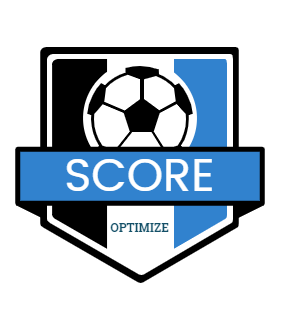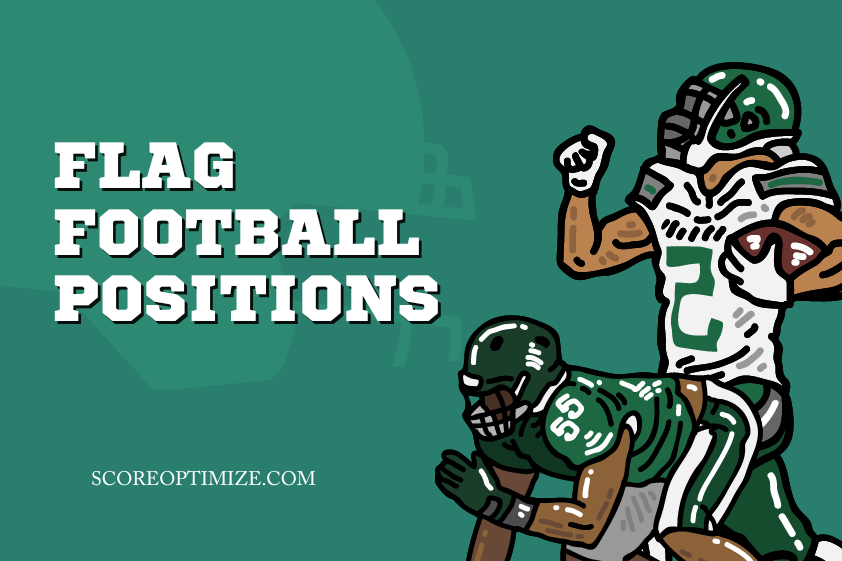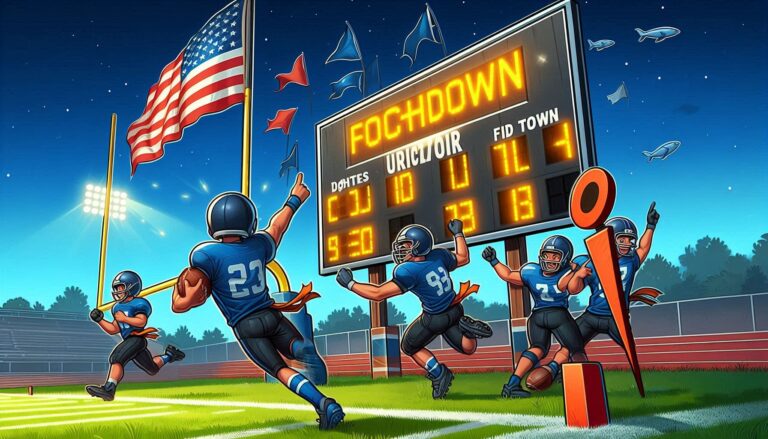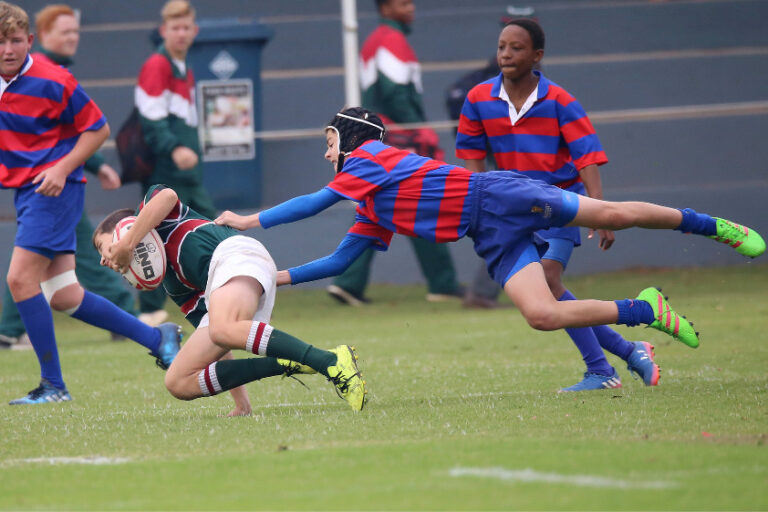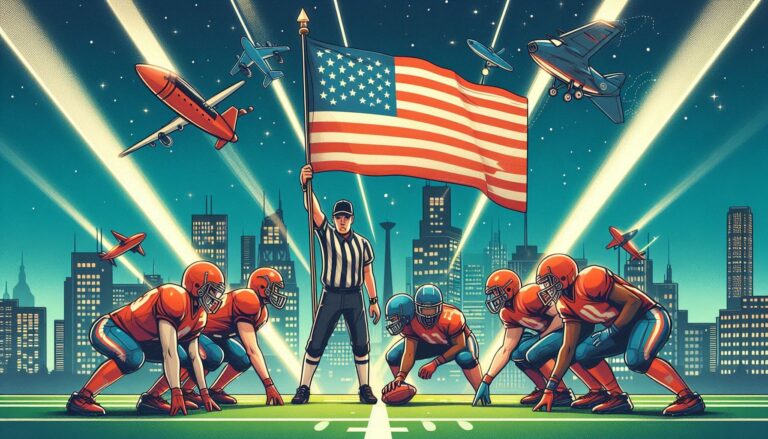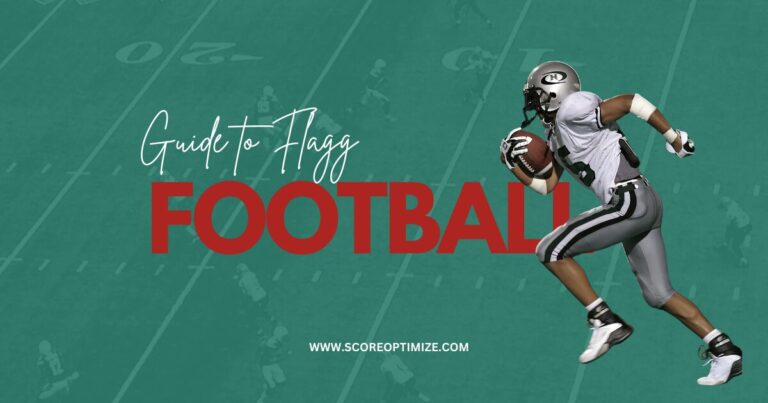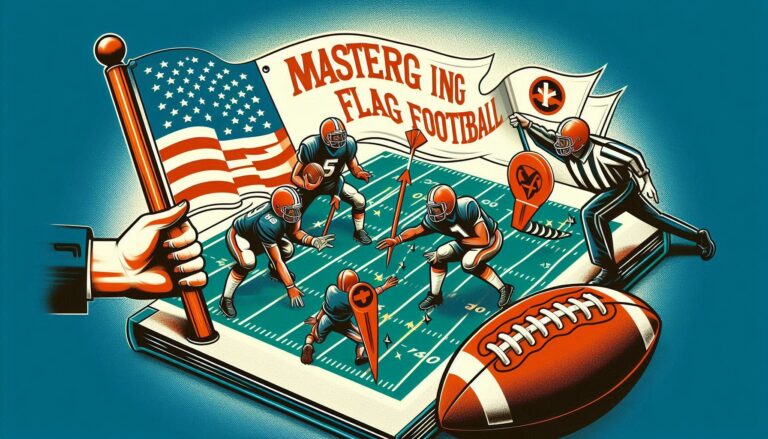Introduction
In flag football, the most valuable players in offensive positions are those with a diverse range of skills. They possess the ability to throw, catch, and run intricate pass routes quickly. Their capacity to read the field and adapt their position during a play is essential for advancing downfield effectively. Let’s break down the offensive positions in flag football:
The Offensive Positions
Football players who possess a diverse range of skills are the most valuable at offensive positions. They possess the ability to throw, catch, and run intricate pass routes fast. They can read the field and adjust their football position to move downfield during a play. The football positions for offensive are explained as follows:
1. Quarterback
The quarterback is the leader and playmaker of the offense. They receive the snap from the center and are responsible for initiating each play. The quarterback’s main duties include throwing the ball to receivers, making decisions based on the defensive alignment, and executing handoffs or lateral passes. They must possess excellent throwing accuracy, decision-making skills, and a strong understanding of the game.
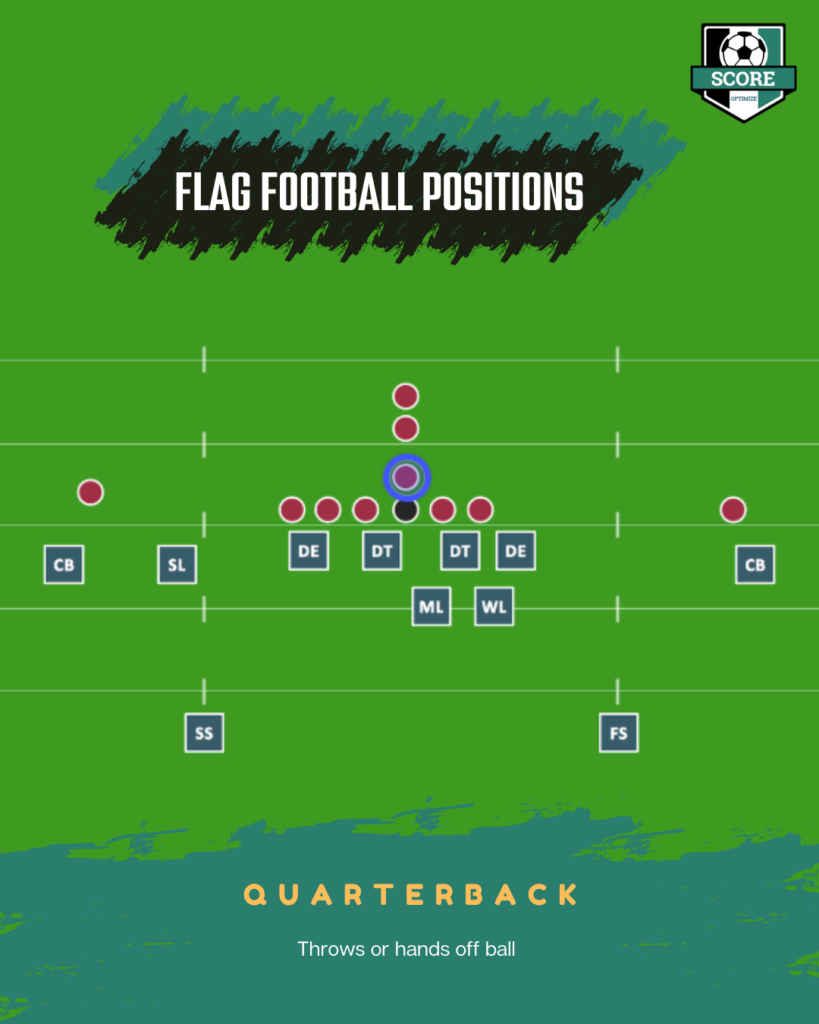
Responsibilities:
- Directing the team’s offense and ensuring everyone is in sync.
- Reading the defense and making adjustments on the fly.
- Communicating play calls to other players.
- Executing precise and strategic passes to receivers.
Skills Needed:
- Excellent throwing accuracy and arm strength.
- Quick decision-making under pressure.
- Exceptional leadership and communication abilities.
- Ability to read the defense and identify open receivers.
- Strategic thinking to exploit gaps in the defense.
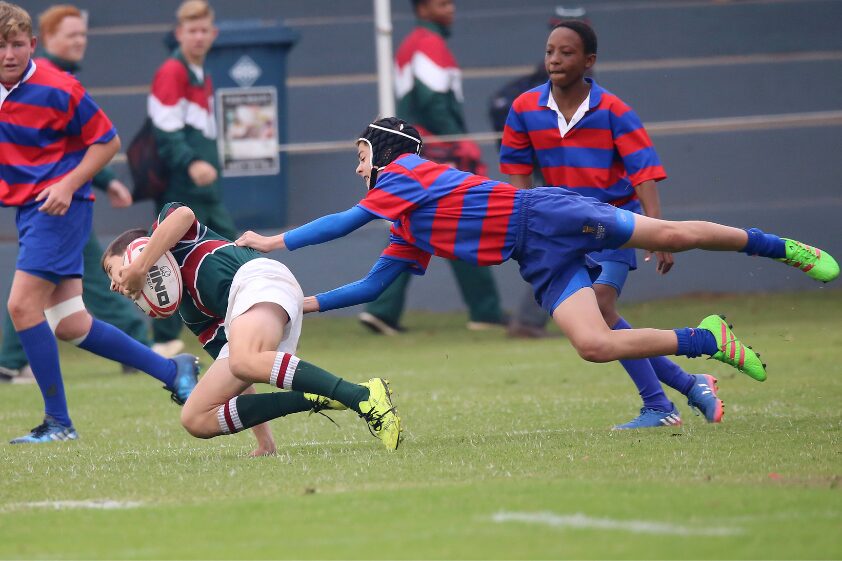
“As the quarterback, you hold the key to the team’s success. Your ability to make split-second decisions and deliver accurate passes can change the course of the game.” – Coach John Smith
2. Wide Receiver
The primary responsibility of the wide receiver is to accept a ball from the quarterback or another player, run down the field, or score. They are continually trying to move away from their opponent so they may receive a pass by running accurate and frequently intricate pass routes. Teams usually have two or three wide receivers on the field at once when playing flag football.
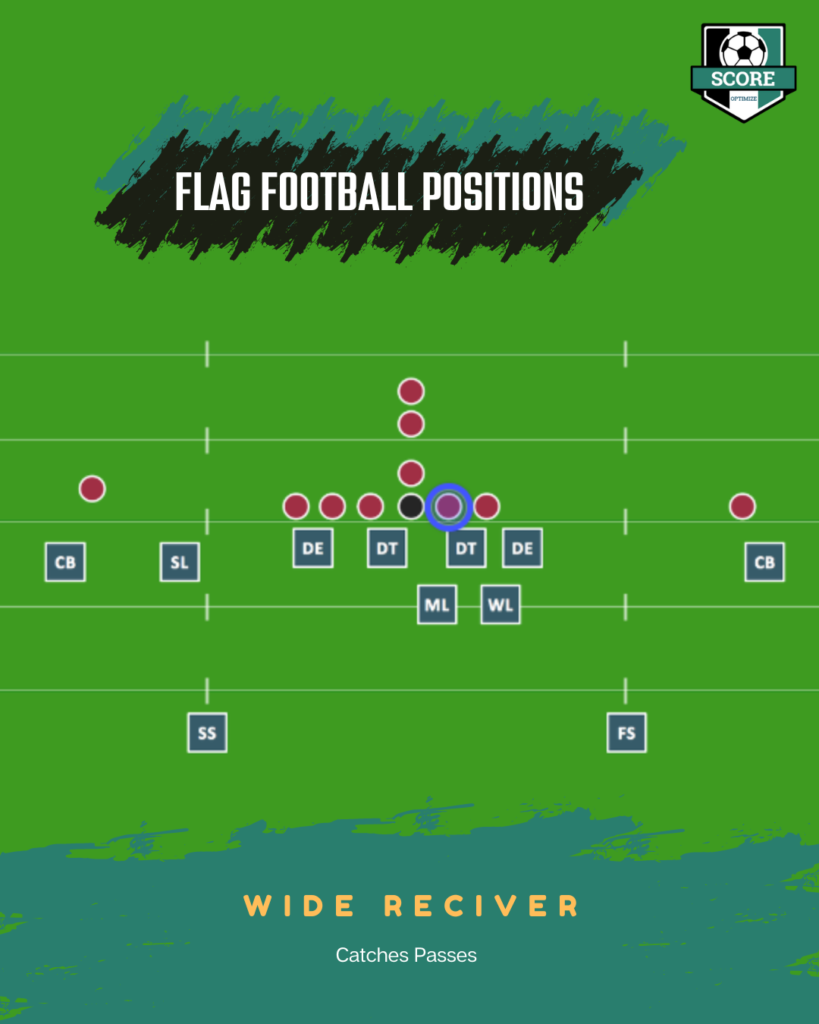
Responsibilities:
- Running precise routes, designed to deceive defenders.
- Getting open to receive passes from the quarterback.
- Adjusting routes based on the ongoing play.
- Creating separation from defenders to catch the flag football’s version of a touchdown, the “flag pull.”
Skills Needed:
- Speed and agility to quickly change direction.
- Exceptional hand-eye coordination and catching skills.
- Ability to adapt routes based on the ongoing play.
- Understanding different coverages to exploit defensive weaknesses.
- Effective communication with the quarterback for successful receptions.
“Wide receivers are the game-changers. With their speed and agility, they are the ones who often turn an ordinary play into an extraordinary touchdown.” – Former NFL wide receiver, Sarah Davis.
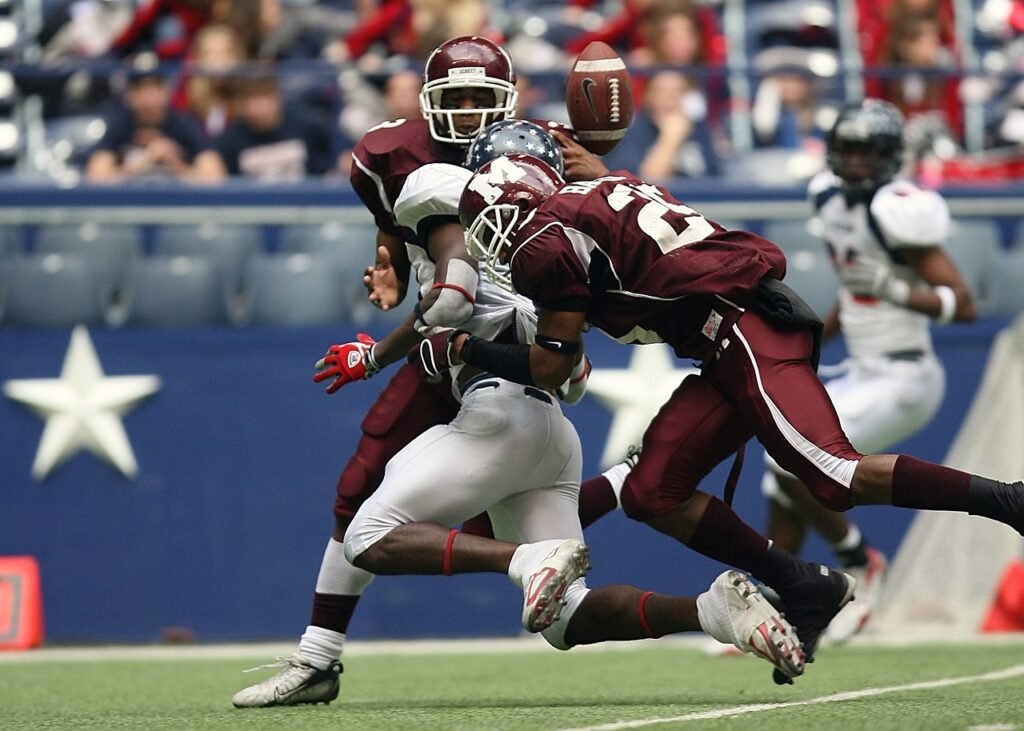
3. Running Back
In a running play in football, this position is in charge of carrying the ball. After the ball is snapped, the center lines up in the backfield. They then advance to take a hand-off from the quarterback and run down the field with the ball. They can also become a receiver if the quarterback does not pass the ball to them. NFL FLAG football prohibits running plays within five yards of the midfield or end zone, so players at this position usually adjust their role to the play more frequently than others.
Responsibilities:
- Running the ball through gaps in the defense.
- Blocking defenders to protect the quarterback.
- Catching short passes and creating yards after the catch.
- Reading the defense to find openings for successful runs.
Skills Needed:
- Speed and agility to evade defenders and break tackles.
- Good vision and awareness to find running lanes.
- Effective blocking techniques to protect the quarterback.
- Reliable hands for receiving short passes.
- Patience and timing to wait for the perfect moment to make a move.
“Running backs are the heartbeat of the offense. Their ability to break tackles and find openings can turn a seemingly average play into a game-changing run.” – Flag football coach, Mark Thompson.

4. Offensive Linemen
Offensive linemen play a critical role in protecting the quarterback and creating running lanes for the running backs. The offensive line consists of five players: the center, two guards, and two tackles. Their primary objective is to block opposing defenders, preventing them from reaching the quarterback or tackling the running back. Offensive linemen must possess strength, agility, and good communication skills to work together as a cohesive unit and execute their blocking assignments effectively.
Responsibilities:
- Start with a proper stance and explode off the snap
- Block using drive and pass protection techniques
- Create a protective pocket around the quarterback
- Stay aware of defensive strategies and adjust accordingly
Skills
- The ability to run and jump quickly
- The ability to change direction quickly
- The ability to block and tackle opponents
- The ability to catch and throw the ball
The Defensive Positions
Flag football does not allow for contact, blocking or tackling, therefore defense takes on a slightly different look. Five defensive football players, who usually play one of two positions—defensive back or rusher—replace linemen. However, the goal of any defensive position in flag football is to keep the opposition from scoring. These are the football defensive positions discussed.
1. Defensive Linemen
Defensive linemen are positioned at the line of scrimmage and their main goal is to disrupt the offensive play. They aim to sack the quarterback, tackle the running back behind the line of scrimmage, or disrupt the passing game by batting down passes. Defensive linemen must possess strength, agility, and quick reflexes to shed blocks and make plays in the backfield.
Skills:
- Mastering techniques for disrupting plays.
- Swiftly disengaging to pursue or disrupt.
- Anchoring against runs to limit yards.
- Swiftly reacting, batting down passes.
Responsibilities:
- Maintain gap discipline to defend assigned lanes.
- Plug running lanes, and maintain gap integrity to limit yards.
- Identify plays, and react to make plays on the ball.
- Communicate offensive formations, and calls, ensure coordination
2. Linebacker
Linebackers are versatile players who contribute to both run defense and pass coverage. They line up behind the defensive linemen and are responsible for filling gaps in the run game, covering tight ends or running backs in pass coverage, and blitzing the quarterback. Linebackers must possess a combination of speed, agility, and football intelligence to read plays and react quickly.
Responsibilities:
- Stopping the running back before they reach the line of scrimmage.
- Defending against short passes and covering running backs.
- Blitzing the quarterback and creating pressure.
- Providing support to the defensive line.
Skills Needed:
- Strength and toughness to take on blockers and make tackles.
- Sharp instincts to read plays and react quickly.
- Versatility to defend against the run and short passes.
- Effective blitzing technique to pressure the quarterback.
- Effective communication with teammates to coordinate defensive efforts.
“Linebackers are the warriors of the defense. Their versatility and tenacity make them invaluable assets in stopping opponents and turning the game in their team’s favor.” – Former NFL linebacker, Jason Miller.
3. Defensive Back
Defensive backs are responsible for covering the wide receivers and preventing them from making receptions. They line up behind the linebackers and work to shut down the passing game. Defensive backs must possess excellent coverage skills, including speed, agility, and the ability to anticipate the quarterback’s throws. They also need good ball skills to intercept or deflect passes.
The main objective of a defensive back is to cover wide receivers, break up passes, and remove flags from the ball carrier’s belt. In football, these positions can play man-to-man or zone, based on the league’s regulations and the coach’s philosophy.
Responsibilities:
- Coverage of wide receivers, tight ends, or running backs.
- Intercepting passes to gain possession for their team.
- Maintaining close proximity to receivers to prevent catches.
- Pulling flags from the opposing team’s ball carrier to stop plays.
Skills Needed:
- Quickness and agility to keep up with fast wide receivers.
- Excellent timing and hand-eye coordination for interceptions.
- Strong flag-pulling technique.
- Knowledge of various defensive coverages and strategies.
- Strong communication skills with other defensive players.
“Defensive backs are the gatekeepers of the end zone. Their ability to disrupt the opposing team’s offensive strategies can be the game-changing factor that leads to victory.” – NFL analyst, Mike Evans.

4. Rusher
Rushing the passer stops the quarterback from completing the throw, which is a crucial defensive play. At snap, the rusher is positioned seven yards behind the line of scrimmage, and the quarterback has seven seconds to complete the pass. The defensive team has more opportunity to cause errors and intercept passes the quicker the rusher reaches the quarterback.
Skills
Speed and acceleration, with the ability to come under control once they are within distance of the quarterback to remove the flag(s)
Technique to properly pull the ball carrier’s flags off: correct alignment, stance, and movement
Responsibilities:
- Apply consistent pressure on the quarterback
- Generate sacks by beating blockers
- Support run defense and maintain gap integrity
- Prevent quarterback escapes and disrupt running plays
5. Safety
In 7 on 7 leagues, flag football teams are more likely to play with a safety on their defense, but this is not always the case. This player serves as a catch-all by positioning himself further back behind the line of scrimmage and bringing down any stray players. When a wide receiver goes deep or an offensive player breaks free from a running play, the safety covers to keep the ball carrier from scoring.
Ability
- the capacity to play and understand the field, as well as make decisions throughout the game about where coverage is required
- Acceleration and speed
- Method for correctly removing the ball-carriers flags: proper stance, movement, and alignment
WHAT POSITION SHOULD I PLAY IN FLAG FOOTBALL?
In flag football, each position plays a crucial role in the success of the team. From the leader and play-caller, the quarterback, to the receivers who catch the passes and the defenders who aim to stop them, every player contributes to the excitement of the game. Understanding the different positions allows us to appreciate the skills and the strategies involved in flag football.
While this article has provided an overview, there is always more to learn about the complexities of each position. Feel free to explore additional resources on flag football to delve deeper into each role’s specific responsibilities and techniques. So grab a flag and get ready to experience the fast-paced action of flag football firsthand!
